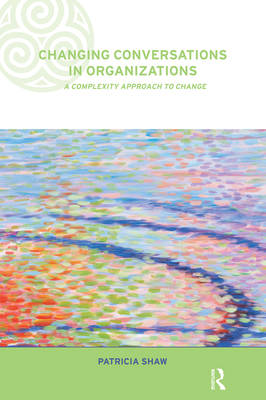
- Afhalen na 1 uur in een winkel met voorraad
- Gratis thuislevering in België vanaf € 30
- Ruim aanbod met 7 miljoen producten
- Afhalen na 1 uur in een winkel met voorraad
- Gratis thuislevering in België vanaf € 30
- Ruim aanbod met 7 miljoen producten
Zoeken
€ 77,45
+ 154 punten
Uitvoering
Omschrijving
Drawing on the theoretical foundations laid out in earlier volumes of this series, this book describes an approach to organizational change and development that is informed by a complexity perspective. It clarifies the experience of being in the midst of change. Unlike many books that presume clarity of foresight or hindsight, the author focuses on the essential uncertainty of participating in evolving events as they happen and considers the creative possibilities of such participation. Most methodologies for organizational change are firmly rooted in systems thinking, as are many approaches to process consultation and facilitation. This book questions the suggestion that we can choose and design new futures for our organizations in the way we often hope. Avoiding the widely favoured use of two by two matrices, idealized schemas and simplified typologies that characterize much of the management literature on change, this book encourages the reader to live in the immediate paradoxes and complexities of organizational life, where we must act with intention into the unknowable. The author uses detailed reflective narrative to evoke and elaborate on the experience of participating in the conversational processes of human organizing. It asserts that possibilities are perpetually sustained and changed by the conversational life of organizations. This book will be valuable to consultants, managers and leaders, indeed all those who are dissatisfied with idealized models of change and are searching for ways to develop an effective change practice.
Specificaties
Betrokkenen
- Auteur(s):
- Uitgeverij:
Inhoud
- Aantal bladzijden:
- 200
- Taal:
- Engels
- Reeks:
Eigenschappen
- Productcode (EAN):
- 9780415249140
- Verschijningsdatum:
- 25/07/2002
- Uitvoering:
- Paperback
- Formaat:
- Trade paperback (VS)
- Afmetingen:
- 157 mm x 239 mm
- Gewicht:
- 317 g

Alleen bij Standaard Boekhandel
+ 154 punten op je klantenkaart van Standaard Boekhandel
Beoordelingen
We publiceren alleen reviews die voldoen aan de voorwaarden voor reviews. Bekijk onze voorwaarden voor reviews.











